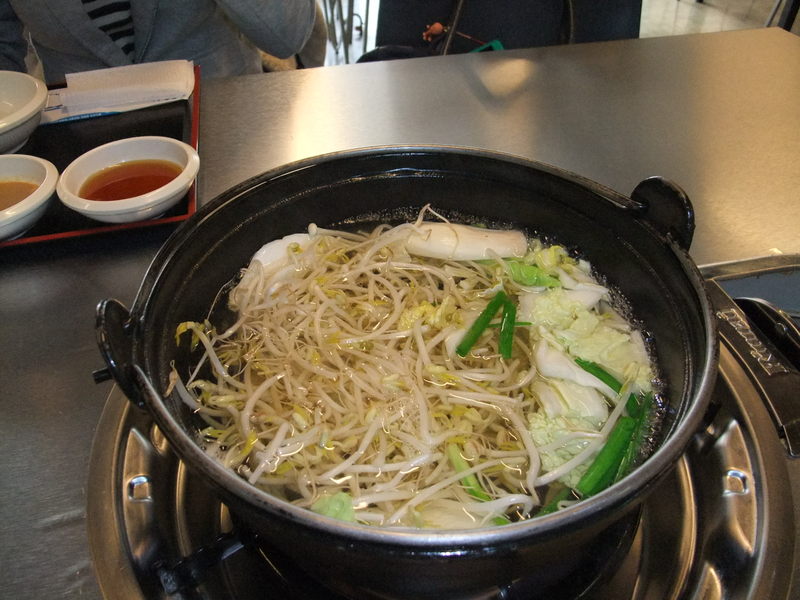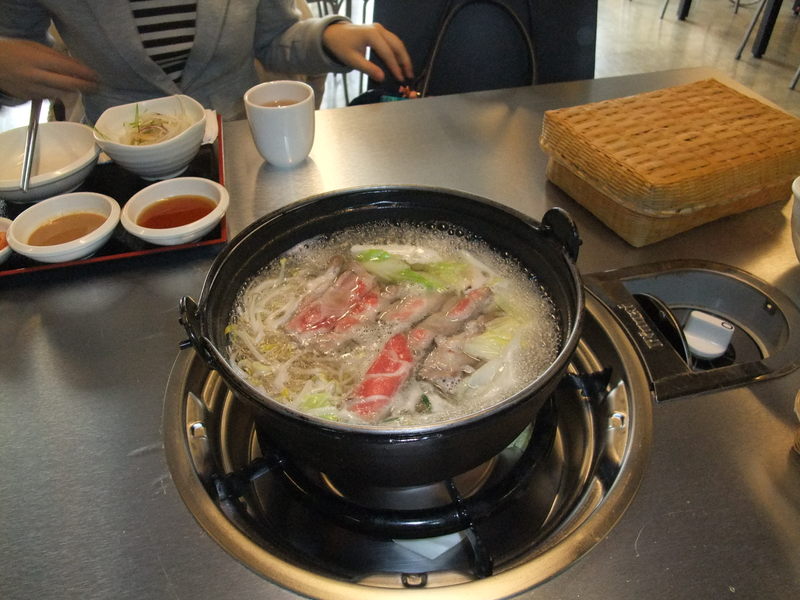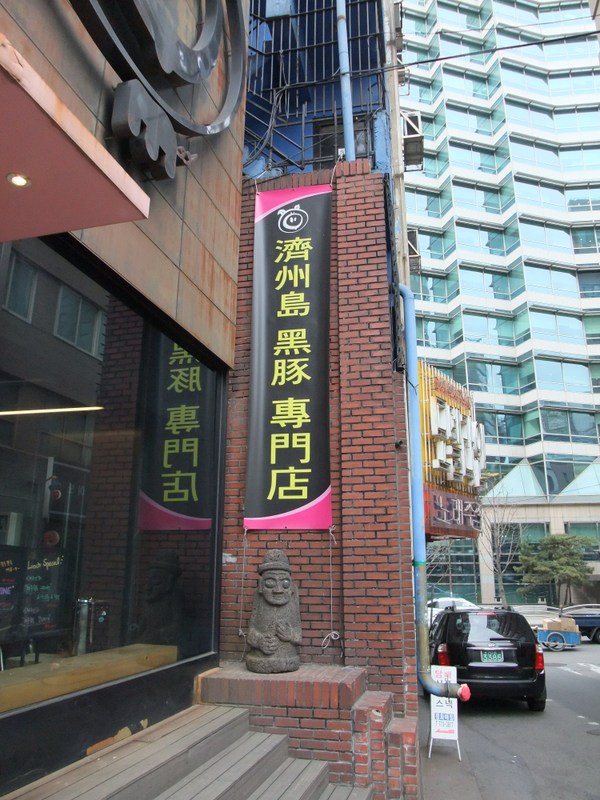I expected the lunch because the guide told us that she would show us this nice restaurant where a black pig, produced in the Jeju-do island, would be served and delicious. Besides, I'm now interested in the history of the island and am learning about it. These reasons made me joyful. The restaurant was clean and tidy. The atmosphere of it was far away from that of the Namdaemun Market. Actually, the dish was very delicious and I enjoyed it.
At the end of this entry, I'm showing five pictures. I'm sure you can understand what the dish was like from the pictures. It was a fully Korean style lunch. Metal chopsticks and a spoon were put in the paper bag being placed longitudinally in the second picture. In the next picture, the specialty was written in Kanji. These types of characters are commonly used in Korea and Japan, though people from other places than both countries might feel curious. Japanese and Korean language surprisingly resemble with each other grammatically. It means that it's easier to learn each other's language for Korean and Japanese people, than other people.
The last picture shows the price list. If you are a Japanese person, try to convert them into Japanese yen. 9900 won changes to be 750 yen. Our lunch cost 750 yen with endless helpings of rice and accompanying dishes.
(Vocabulary)
convert (通貨を)換算する
accompanying dish おかず






I think it's cool that they have the sign in Japanese too. As a native English speaker, I have become a bit used to foreign places having at least a little bit of English, but it must be nice for a native Japanese speaker to be able to see signs in their language too. Was it the typical Japanese Shabu Shabu? It looked more like Nabe to me.
Posted by: Sarah | Apr 16, 2009 at 11:21 PM